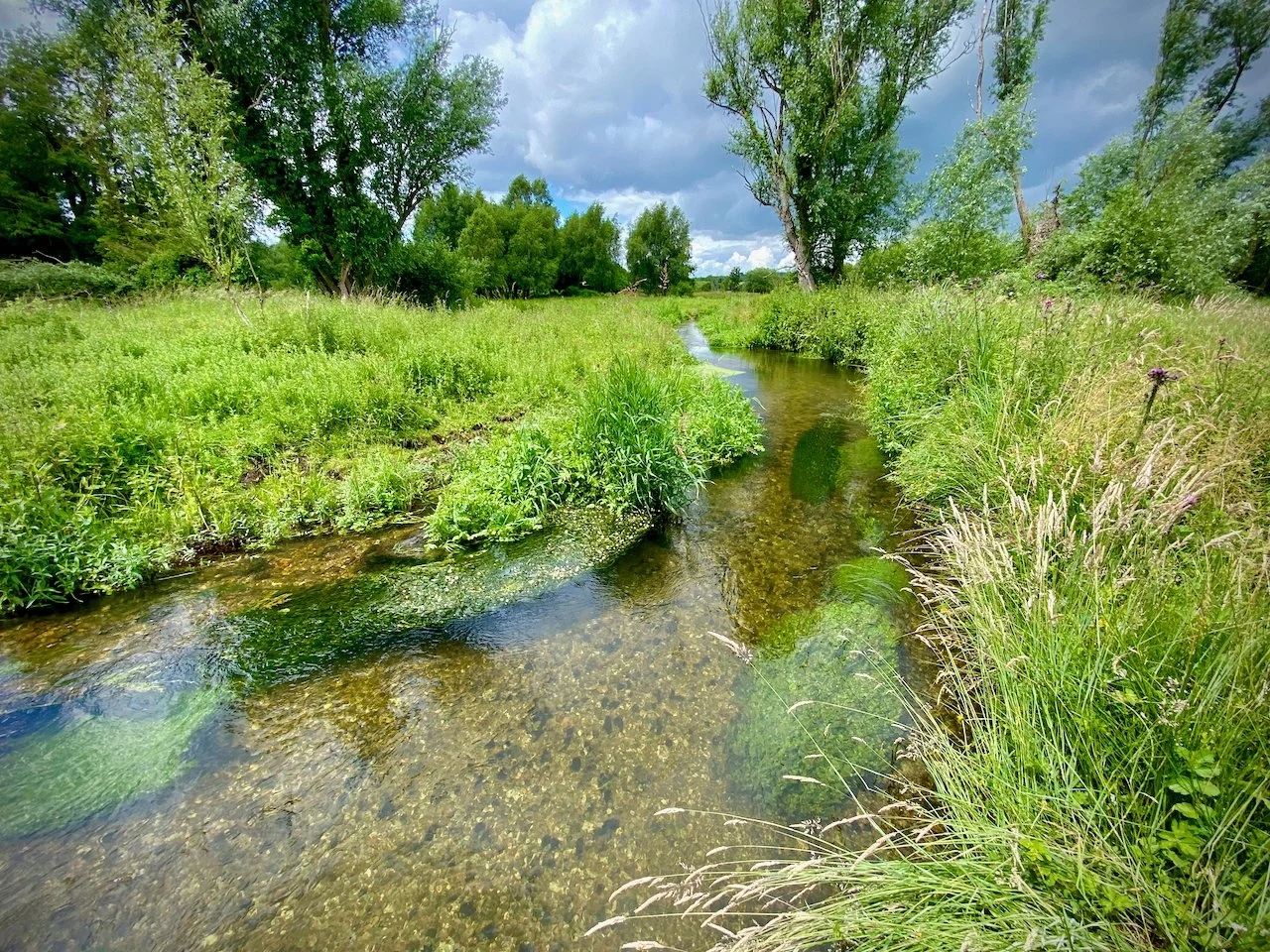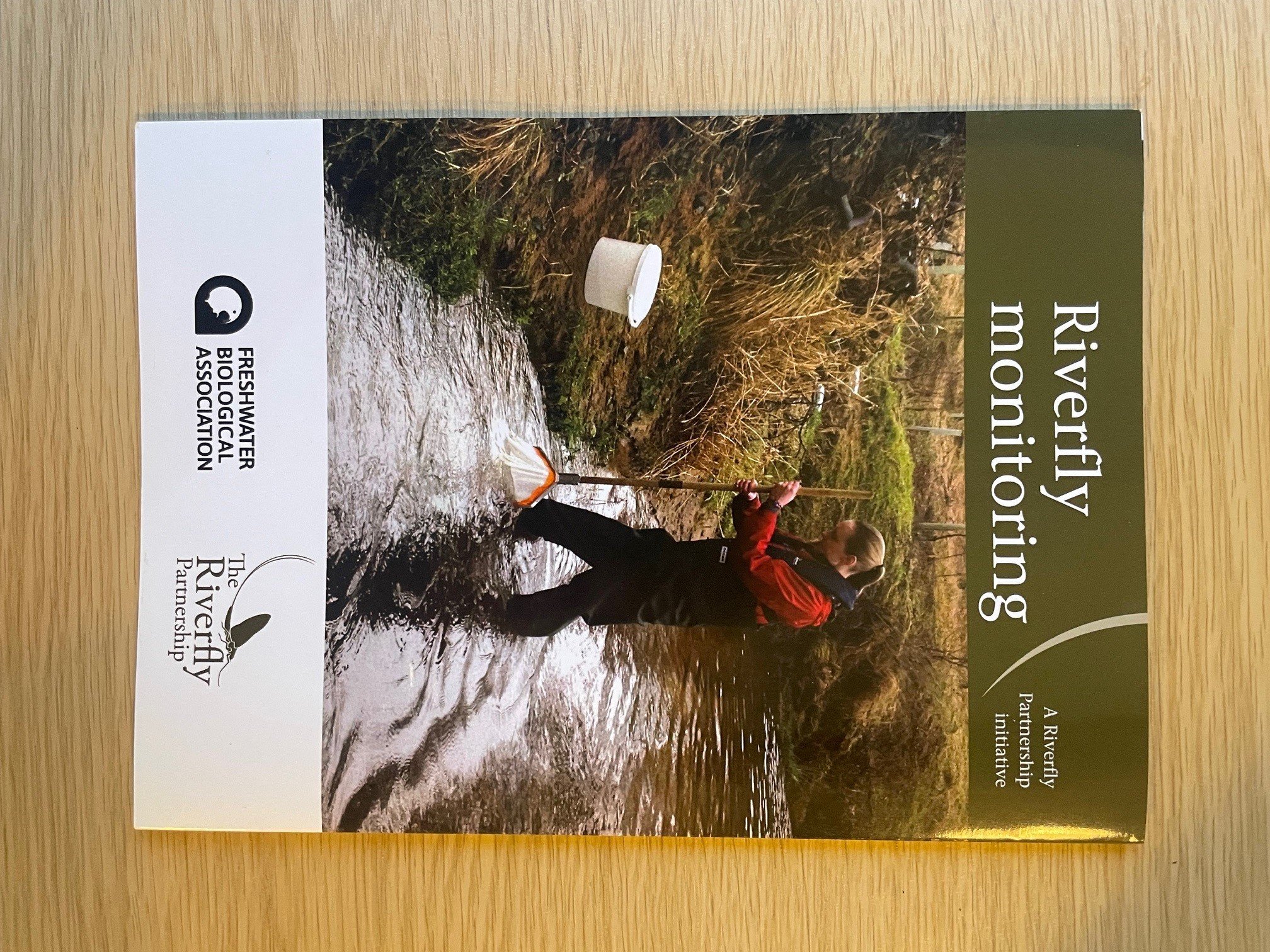Restoring chalk streams in a changing climate
16 July, 2024
By Richard Handley & Judy England
Environment Agency
richard.handley@environment-agency.gov.uk
judy.england@environment-agency.gov.uk
Richard Handley is the Chalk Stream Manager at the Environment Agency and President of the Chartered Institute of Ecology and Environmental Management. Judy England is a National Research Scientist within the Environment Agency’s Chief Scientist’s Group, an FBA Fellow and a member of the River Restoration Centre Advisory Board. Here, they reflect on restoring England’s chalk streams in a changing climate.
Edited by Rachel Stubbington, Nottingham Trent University
Rachel is both a Fellow of the Freshwater Biological Association and long-standing Editor of FBA articles. If you would like to submit an article for consideration for publication, please contact Rachel at: rachel.stubbington@ntu.ac.uk
Today’s chalk streams
Chalk streams are globally rare freshwaters prized for their crystal-clear water, biodiversity and contribution to an iconic landscape (Fig. 1). These streams are characterised by shallow, wide channel cross-sections and have relatively stable water temperatures due to groundwater inputs from the chalk aquifer, which warm their surface waters in winter but have a cooling effect in summer (Mackey and Berrie 1991). Their upper reaches can comprise ephemeral headwaters, which flow only occasionally, and winterbourne sections, which experience seasonal shifts between flowing and dry phases. Near-perennial reaches dry only during droughts, whereas groundwater sustains year-round flow in downstream perennial reaches.
Winterbournes support rare specialist insects whose aquatic and terrestrial life stages are timed to coincide with wet and dry phases, respectively, such as the winterbourne stonefly (Nemoura lacustris) and the scarce purple dun mayfly (Paraleptophlebia werneri; Macadam et al. 2022). They are also home to specialist plants such as the pond water-crowfoot Ranunculus peltatus. Perennial reaches support rich aquatic biodiversity including abundant riverflies; species-rich instream and riparian plant communities including brook water crowfoot (Ranunculus penicillatus subsp. pseudofluitans), river water dropwort (Oenanthe fluviatilis) and water starwort (Callitriche); and internationally celebrated brown trout (Salmo trutta) and Atlantic salmon (Salmo salar) fisheries.
Figure 1. The River Test, a classic chalk stream. © Judy England.
Despite being highly valued, the ecological integrity of chalk streams is compromised by human activity. For centuries, chalk streams and their catchments have been subject to multiple pressures, including physical channel modification, weirs and other impoundments, excess fine sediment, abstraction, water pollution and invasive species (Fig. 2).
Figure 2. Human modification of chalk streams. © Environment Agency.
Chalk streams in a changing climate
The UK climate is changing, and the effects will interact with other human pressures to shape chalk stream ecosystems. Projections for chalk regions of England include wetter, milder winters and warmer summers with more frequent hot spells and storms (Met Office 2019). Despite their thermal stability, monthly mean chalk-stream water temperatures are projected to increase by 0.58°C per decade above 1981–2005 levels to 2080. These projections differ among regions: sites in north-east England (e.g. the Lincolnshire and Yorkshire Wolds) and around London (e.g. in the Colne and Lee catchments) are projected to experience the lowest and greatest increases, respectively (Environment Agency 2022).
Extreme events including droughts, floods and heatwaves are generally expected to change in frequency and magnitude (Stubbington et al. 2024), with impacts on chalk streams. Groundwater will buffer some of these impacts, but expected responses to climatic shifts include changes to the extent and timing of wet and dry phases in ephemeral and winterbourne reaches, increased drying of non-perennial reaches, and greater flow variability in perennial reaches (Fig. 3).
Figure 3. How extreme hydrological events (i.e. droughts and floods) might impact on chalk stream flows. Adapted from Stubbington et al. (2022).
Ecological consequences of climate change
Rising water temperatures may favour cyprinid fish and enable dragonflies and damselflies to extend their ranges, whereas populations of cold-water species including salmonid fish and some mayflies, stoneflies and caddisflies may decline (Johnson et al. 2024). For example, winter temperatures above 12°C can increase egg mortality, reduce size at hatching and increase deformity rates in salmonids (Solomon and Lightfoot, 2008). Warmer waters could also shift the timing of lifecycle events such as fish migration and insect emergence (Johnson et al. 2024). These ecological impacts may be greater when heatwaves coincide with droughts, driving up water temperatures. However, groundwater inputs and shading can create cold-water refuges that reduce some impacts. Changing patterns of wet and dry phases could also affect winterbourne specialist insects and their interactions with predators and competitors (Aspin and House 2022).
The need for restoration in a changing climate
The need to restore chalk streams is well-recognised and is championed by the Catchment Based Approach’s (CaBA) Chalk Stream Restoration Group (CSRG). In 2021, the CSRG published the Chalk Stream Restoration Strategy (CSRS; Rangeley-Wilson 2021), which provides a vision, and a comprehensive plan, to restore England’s chalk streams.
The CSRG vision is: “ecologically vibrant chalk streams, all flowing with a healthy flush of clean water through meandering channels over bright gravel; streams full of wildlife, streams which are a pleasure to spend time beside and which could and should be a credit to the stewardship of our generation”.
The plan to achieve good ecological health of all chalk streams depends on the “trinity of ecological health”: the naturalness of the flow regime, the water quality and the quality of physical habitats, including the river’s shape and connection to its floodplain (Rangeley-Wilson 2021). Addressing human pressures to restore this trinity will help chalk streams become more resilient in a changing climate. For example, improving water quality can offset the effects of warming temperatures (Durance and Ormerod 2009), and creating flow refuges (i.e. slower flowing areas at high flows and faster flowing waters during low flows) can reduce the effects of extreme flows (Mathers et al. 2022). The River Nar restoration in Norfolk illustrates the morphological, ecological and wider benefits that action can bring to chalk streams (Fig. 4)
Figure 4. A restored section of the River Nar, Norfolk. © Richard Handley.
Restoration in action
The key CSRS recommendations include:
Setting time-bound goals for achieving sustainable abstraction within the national framework for water resources and associated management plans.
Upgrading small sewage treatment works in headwaters, using treatment wetlands to remove nutrients where necessary.
Prioritising chalk streams in plans to address storm overflows.
Using flagship projects to develop and promote the highest standards of physical habitat restoration.
The CSRS Implementation Plan, published by the CSRG (CaBA 2022), details how lead organisations are taking forward these and 30 other recommendations. Some progress has already been made, including:
Designation of all regions dependent on abstraction from chalk aquifers as ‘water-stressed’, enabling water companies to roll-out water metering.
Allocation of additional Environment Agency resources to work on restoring flow in chalk catchments and to fund partnership projects.
Inclusion of chalk streams as high-priority sites, alongside designated and protected sites, in the government’s Storm Overflows Discharge Reduction Plan, meaning that 75% of storm overflows discharging to chalk streams must be addressed by 2035.
Establishment of 12 flagship projects with strong local partnerships, to realise and demonstrate all dimensions of ambition for chalk stream restoration. Projects include parts of the catchments of the Rivers Frome, Hull and Lark, and the River Ems.
Final thoughts
England’s chalk streams are one of the rarest freshwater habitats on earth and are national treasures. Restoring all chalk streams to good ecological health is an ambitious plan that will take time. To achieve this, we need to better understand how climate change impacts interact with other pressures to influence the ecological health of chalk streams. Restoration measures could then be designed to improve their current health and enable ecosystem adaptation to a changing climate. To guide such restoration, the CSRS provides a comprehensive and coherent approach built on sound ecological principles. By gathering evidence and applying the lessons learnt, restoration efforts should become more effective and fuel optimism for the future of chalk streams.
References
Aspin, T. & House, A. 2022. Alpha and beta diversity and species co‐occurrence patterns in headwaters supporting rare intermittent‐stream specialists. Freshwater Biology 67: 1188–1202. https://doi.org/10.1111/fwb.13910
Catchment Based Approach (CaBA). 2022 Chalk Stream Restoration Strategy 2021 Implementation Plan 2022. https://catchmentbasedapproach.org/wp-content/uploads/2022/11/CaBA-CSRG-IMP-PLAN-FINAL-25.11.22.-V2.pdf
Durance, I. & Ormerod, S.J. 2009. Trends in water quality and discharge confound long-term warming effects on river macroinvertebrates. Freshwater Biology 54: 388–405. https://doi.org/10.1111/j.1365-2427.2008.02112.x
Environment Agency. 2022. River water temperature projections for English Chalk streams. https://www.gov.uk/government/publications/river-water-temperature-projections-for-english-chalk-streams
Johnson, M. et al. 2024. Rising water temperature in rivers: Ecological impacts and future resilience. Wiley Interdisciplinary Reviews: Water 11: e1724. https://doi.org/10.1002/wat2.1724
Macadam, C., Stubbington, R. & Wallace, I. 2022. The specialist insects that rely on the wet-dry habitats of temporary streams. FBA News 81: 28–33. https://irep.ntu.ac.uk/id/eprint/44944/1/1498769_Stubbington.pdf
Mackey, A.P. & Berrie, A.D. 1991. The prediction of water temperatures in chalk streams from air temperatures. Hydrobiologia 210: 183–189. https://doi.org/10.1007/BF00034676
Mathers, K.L., Robinson, C.T & Weber, C. 2022. Patchiness in flow refugia use by macroinvertebrates following an artificial flood pulse. River Research and Applications 38: 696–707. https://doi.org/10.1002/rra.3941
Met Office, 2019. UKCP18 Science Overview Report November 2018 (Updated March 2019). https://www.metoffice.gov.uk/pub/data/weather/uk/ukcp18/science-reports/UKCP18-Overview-report.pdf
Rangeley-Wilson, C. 2021. Chalk Stream Restoration Strategy 2021 Main Report. https://catchmentbasedapproach.org/learn/chalk-stream-strategy-3/
Solomon, D.J. & Lightfoot, G.W., 2008. The thermal biology of brown trout and Atlantic salmon. Report SCHO0808BOLV-E-P. Environment Agency.
Stubbington, R. et al. 2022. Chalk streams of the future: the effects of climate change on biodiversity in England’s iconic river ecosystems. https://doi.org/10.6084/m9.figshare.21663269.v1
Stubbington, R. et al. 2024. The effects of drought on biodiversity in UK river ecosystems: Drying rivers in a wet country. Wiley Interdisciplinary Reviews: Water e1745. https://doi.org/10.1002/wat2.1745
Further reading
The Freshwater Biological Association publishes a wide range of books and offers a number of courses throughout the year. Check out our shop here.
Get involved
Our scientific research builds a community of action, bringing people and organisations together to deliver the urgent action needed to protect freshwaters. Join us in protecting freshwater environments now and for the future.













